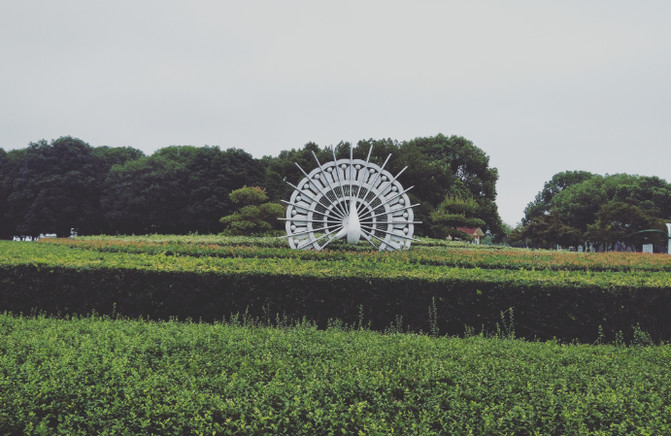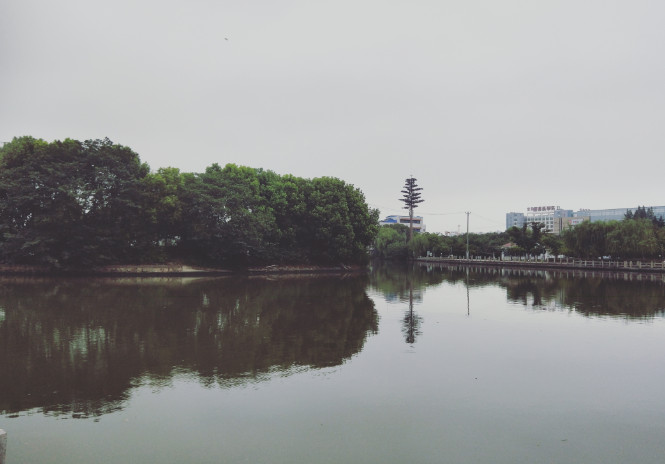Changshu Rule of Law Sculpture Park explores the rule of law, ancient and modern times, at home and abroad
★ Tourist location: Changshu Rule of Law Sculpture Park
The last time I went to Haiyu Garden, I wanted to go across the street to see the Sculpture Park, but I saw the roses too late and couldn't arrange it. As a result, this park has always been in my heart and I can't forget it.
Speaking of which, this park can also be regarded as creating one of the best in the country. It is the first rule of law sculpture park built in China, and it can also be regarded as a leader in the country.

The park was launched in April 2014 and opened to the public in August 2015, with a total investment of more than 10 million yuan and a total area of 2.3 square meters. Such an investment is truly worth it to achieve the highest level in the country.

The park is divided into four theme areas, namely, the Light of Rule of Law, Changshu Historical Rule of Law, Ancient Chinese Rule of Law, and World Rule of Law. In the form of sculptures, tourists are introduced to the rule of law, ancient and modern, Chinese and foreign.

There is a peacock sculpture in the bushes with its screen open to welcome guests. The whole body is white in the green bushes, which is a small and refreshing combination.
Plato said: "Law is the golden bond." This simple sentence saves one of the essential characteristics of the law: the law is the best tool for maintaining social relations. The material of the "tie" is granite, black and gray are carved into the shape of an arch, and the theme of the tie is shown above.

The "Law and Power" built of stainless steel is composed of the organizational shape of "Law and Governance", and the inner cylinder is composed of the character of "Power". The outer square and the inner circle are the rules and regulations, tightly wrapping the cylinder expressing power tightly, implying that power is bound by the rule of law, just like being locked in a cage.

The scale of Bell Square is really not a square. The concept of governing the country according to law proposed at the Fourth Plenary Session of the 18th Central Committee of the Communist Party of China is carved out of bronze and stainless steel. This is the bell of the rule of law ringing in the ears of every Chinese citizen.

Water is a symbol of fairness, and even ordinary people pay attention to "fairness in a bowl of water." "Good is like water" expresses this theme, with a unicorn pattern inlaid on the bowl. In ancient Chinese legends, unicorns were auspicious beasts that eliminated evil and eradicated injustice.

The "Legal Protection Umbrella" is a group of channels composed of colorful hollow umbrellas. It feels beautiful and better than the usual wind chimes. Of course, people do not only design this set of works from an aesthetic perspective, but also imply that the law is the people's protective umbrella, and only under the protection of the law can the people enjoy full rights, freedoms and dignity.

An open "Constitution of the People's Republic of China" is an oath monument. The 15th meeting of the Standing Committee of the 12th National People's Congress voted to adopt the "Decision on Implementing the Constitutional Oath System". National functionaries elected or decided to appoint by the people's congresses at all levels and their standing committees, as well as national functionaries appointed by the "one government, two houses", shall publicly take an oath to the Constitution when taking office.

"Forever and Earth" is a wrought copper work with symmetrical arrangements on both sides. I don't think it wants to express the continuity and loyalty of emotions, but more like it wants to express the long-term existence and fairness of the law? But later, when I saw the "Happiness and Happiness" works of the Marriage Law displayed in book form, I felt that they really wanted to express the happiness, happiness, joy and harmony of the family.

When Wang Tingyun, a Changshu native, was in Liuzhou Prefecture, Guangxi, he had the "six noes" principle: no housekeeper, no door names, no sale of coupons, no celebration of birthdays, no purchase of soil objects, and no collection of surplus grain. The "Six Buting" shows this honest style.

The five major legal systems recognized as the most influential in the history of the rule of law in the world are Chinese legal system, Indian legal system, Islamic legal system, Anglo-American legal system, and civil legal system. The first three have basically disintegrated. The legal system commonly adopted by countries in the world today is Anglo-American legal system and civil legal system.

Britain is one of the representative countries of the common law system. The Bill of Rights of 1689 and the Law of Succession to the Throne of 1701 are the earliest constitutional documents in the world. The United States is another representative country of the Anglo-American legal system. The 1776 Declaration of Independence was called the first declaration of human rights by Marx and established the basic principles of the U.S. Constitution. The 1787 U.S. Constitution was the world's first written constitution.

Germany and France are representative countries of the civil law system. The 1919 Weimar Constitution was the first constitution of the modern bourgeoisie. French codes were formulated earlier. The 1804 Napoleon Code was the first bourgeois civil code and the core and foundation of the civil legal system. The French Criminal Code of 1810 basically formed the criminal law principles of legality for crimes and punishments, non-retroactivity of laws, and compatibility of crimes and punishments.

In the form of scrolls, the "Laws of the Past Dynasties" engrave important legal classics in the history of the rule of law in ancient China. The 3000-year history of feudal rule of law in ancient China is also a history of the struggle between Confucianism and law. Although Emperor Wu of the Han Dynasty abolished hundreds of schools and respected Confucianism, Confucianism remained in a dominant position since then in 2000. In this process, etiquette and law were gradually integrated, and the combination of social and law, and virtue dominated and punished became the basic ideas.

A group of granite embossed uses a large number of characters and stories to express the Zhou Dynasty's etiquette, virtue and prudence in punishment in the early Western Zhou Dynasty, to the contention of hundreds of schools of thought during the Warring States Period, to Qin Shi Huang's admiration of the Legalist School, and the debate between Confucianism and Legalism in the Han Dynasty and later years. Among them, the famous stories include the rule of string songs, the solution of murder cases without nails and rain boots, the defense of authenticity by using cloth, the murderer in black, the intelligent identification of the corpse removal case, Weng Tonghe's reform, and Changshu's old justice. These stories are all true scenes of the rule of law that occurred in Changshu history.

The "Clear Mirror of Mountains and Waters" is carved out of stainless steel. The upper part is a mountain and consists of the seal character Li Si's "Xing Du Ci Shu". The lower part is the reflection of the mountain in the water, which can be explained by the water.

The integrity pavilion as a whole has a structure of the word "letter", and the "heart" pattern in the middle represents "sincerity". Integrity is both a legal requirement and a moral requirement. It is said that people cannot stand without faith, which shows how important the word "faith" plays in people's lives.

The power and responsibility pavilion is a very clever "pavilion". When viewed from the front, it has the word "power" and when viewed from the side, it has the word "responsibility", representing the unity of power and responsibility.
If you have enough time, you can also scan the QR code on the instructions board of each sculpture and listen to the detailed introduction of the work on the spot.

Poetry to remember:
The autumn wind was full of cold air all night,
The flowers are sparse and the leaves are dark and do not fight for spring.
The fragrant osmanthus urges you to return,
The faint charm of the piano washes away old dust.






Previous Article:Shanghu, an unforgettable journey
Next Article:Canglang Pavilion, the oldest garden in Suzhou
